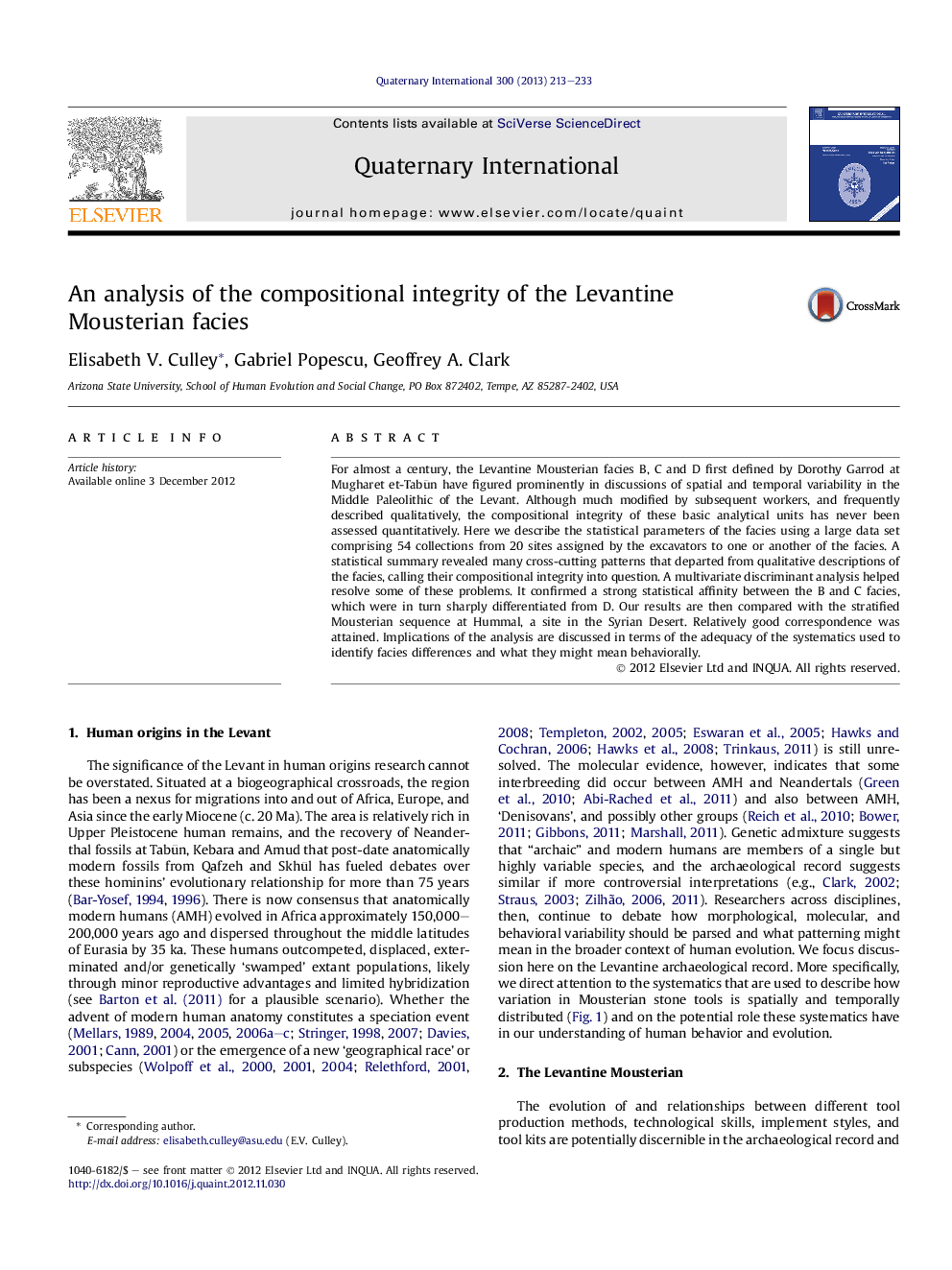| Article ID | Journal | Published Year | Pages | File Type |
|---|---|---|---|---|
| 7452677 | Quaternary International | 2013 | 21 Pages |
Abstract
For almost a century, the Levantine Mousterian facies B, C and D first defined by Dorothy Garrod at Mugharet et-Tabūn have figured prominently in discussions of spatial and temporal variability in the Middle Paleolithic of the Levant. Although much modified by subsequent workers, and frequently described qualitatively, the compositional integrity of these basic analytical units has never been assessed quantitatively. Here we describe the statistical parameters of the facies using a large data set comprising 54 collections from 20 sites assigned by the excavators to one or another of the facies. A statistical summary revealed many cross-cutting patterns that departed from qualitative descriptions of the facies, calling their compositional integrity into question. A multivariate discriminant analysis helped resolve some of these problems. It confirmed a strong statistical affinity between the B and C facies, which were in turn sharply differentiated from D. Our results are then compared with the stratified Mousterian sequence at Hummal, a site in the Syrian Desert. Relatively good correspondence was attained. Implications of the analysis are discussed in terms of the adequacy of the systematics used to identify facies differences and what they might mean behaviorally.
Related Topics
Physical Sciences and Engineering
Earth and Planetary Sciences
Geology
Authors
Elisabeth V. Culley, Gabriel Popescu, Geoffrey A. Clark,
